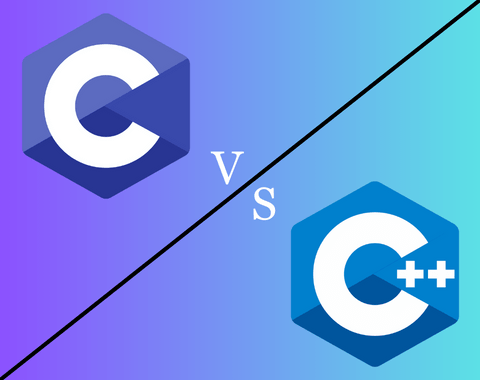
C++ is a programming language that boasts a hidden power appreciated by developers worldwide. Renowned for its versatility and efficiency, C++ has earned its place as a cornerstone of software development. In this comprehensive blog post, we embark on a journey to unveil the hidden gems of C++.
Our goal is to explore the key features that make C++ a preferred choice among developers and highlight its enduring significance in the ever-evolving world of programming.
To understand C++, we must delve into its rich history and evolution. Born as an extension of the C programming language, C++ has come a long way since its inception in the late 1970s. We’ll explore key milestones, such as the development of object-oriented features and the creation of the ANSI C++ standard. Understanding C++’s evolution provides valuable insights into its enduring popularity.
At the core of C++ lies its syntax and structure, which form the building blocks of all C++ programs. We’ll break down the basic components of C++ code, from headers and functions to classes and objects. With a firm grasp of C++’s syntax and structure, readers will be well-equipped to dive deeper into the language’s features.
Object-oriented programming (OOP) is a fundamental paradigm in C++, and we’ll demystify its importance. We’ll define OOP and explain how C++ elegantly supports it. Furthermore, we’ll highlight the core OOP concepts in C++, such as classes, objects, encapsulation, inheritance, and polymorphism. Understanding these principles unlocks C++’s potential for creating efficient, modular, and maintainable code.
The Standard Template Library (STL) is a powerhouse of C++, providing a wealth of pre-built data structures and algorithms. We’ll introduce the STL and its pivotal role in simplifying complex tasks. Readers will gain insights into commonly used containers like vectors, lists, and maps, as well as the powerful algorithms furnished by the STL.
Multiple inheritance is a unique feature of C++ that allows a class to inherit properties and behaviors from multiple parent classes. We’ll delve into the concept of multiple inheritance, its advantages, and potential pitfalls. Understanding when and how to use multiple inheritance effectively is essential for harnessing C++’s full potential.
Operator overloading is a distinctive feature of C++ that enables custom definitions of operators. We’ll define operator overloading and emphasize its significance in creating intuitive and expressive code. Real-world examples will showcase how C++ developers leverage operator overloading for efficiency and clarity.
Efficient memory management sets C++ apart from many other programming languages. We’ll explore C++’s ability to allocate and deallocate memory dynamically using `new` and `delete`. Understanding memory management is crucial for creating high-performance applications without memory leaks.
Exception handling is a cornerstone of robust C++ programming. We’ll explain the importance of exception handling in maintaining the stability of applications. Practical examples of try-catch blocks and exception specifications will illustrate how C++ handles errors gracefully.
C++’s unmatched performance is a result of its low-level memory control. We’ll delve into the intricacies of C++’s memory management, highlighting how it contributes to superior performance. Comparative analysis will demonstrate how C++ outperforms other programming languages in resource-intensive tasks.
C++ has a prominent role in system-level programming, where precision and efficiency are paramount. We’ll explore how C++ is utilized in developing operating systems and device drivers, enabling seamless communication between software and hardware.
The gaming industry relies heavily on C++ due to its speed and efficiency. We’ll delve into C++’s significance in game development, citing popular game engines and blockbuster titles developed using this powerful language.
C++ is an ideal choice for embedded systems programming, which powers a wide range of devices and applications. We’ll provide examples of embedded systems where C++ plays a pivotal role, from medical devices to automotive control systems.
Scientific computing benefits immensely from C++’s precision and performance. We’ll explore how C++ is employed in scientific simulations, data analysis, and computational tasks. Mention of scientific libraries and tools developed in C++ will illustrate its impact on various scientific disciplines.
Acknowledging that C++ can be complex for beginners is essential. We’ll provide insights into the learning curve of C++ and offer practical tips for mastering the language gradually. By understanding the challenges, readers can approach C++ with confidence and perseverance.
Efficient memory management is both a strength and a potential challenge in C++. We’ll discuss common memory-related issues, such as memory leaks and segmentation faults, and provide best practices for avoiding these pitfalls. This section aims to equip readers with the knowledge needed to write memory-efficient and reliable code.
In conclusion, C++ is a programming language with hidden power, waiting to be harnessed by developers. By understanding its key features, such as object-oriented programming, the Standard Template Library, multiple inheritance, operator overloading, memory management, and exception handling, developers can unlock C++’s full potential. Whether you’re seeking superior performance in system programming, diving into game development, exploring embedded systems, or venturing into scientific computing, C++ offers a robust toolkit.
As we wrap up our exploration, we encourage readers to delve deeper into C++ and consider its hidden power in various domains of software development. Embracing C++ means embracing efficiency, versatility, and the capacity to tackle complex challenges with confidence. The world of C++ programming awaits, promising endless possibilities and opportunities for innovation.
Indian Institute of Embedded Systems – IIES